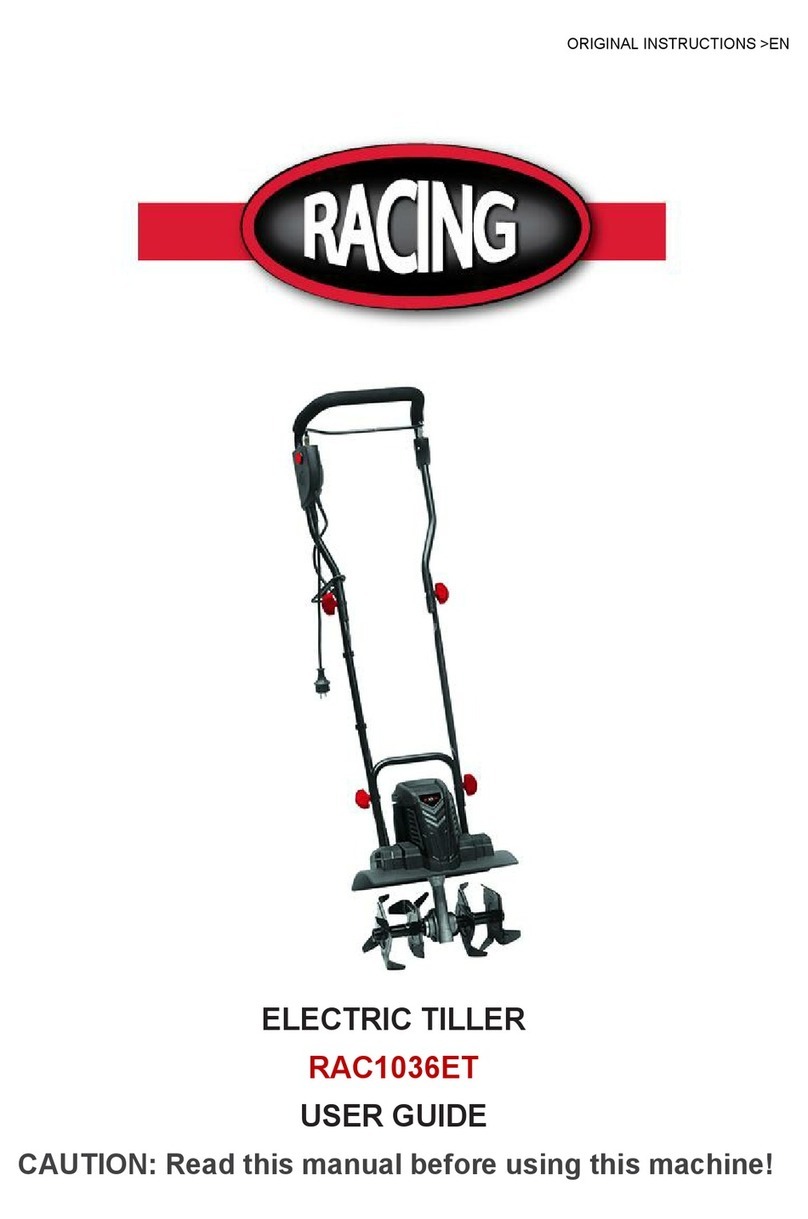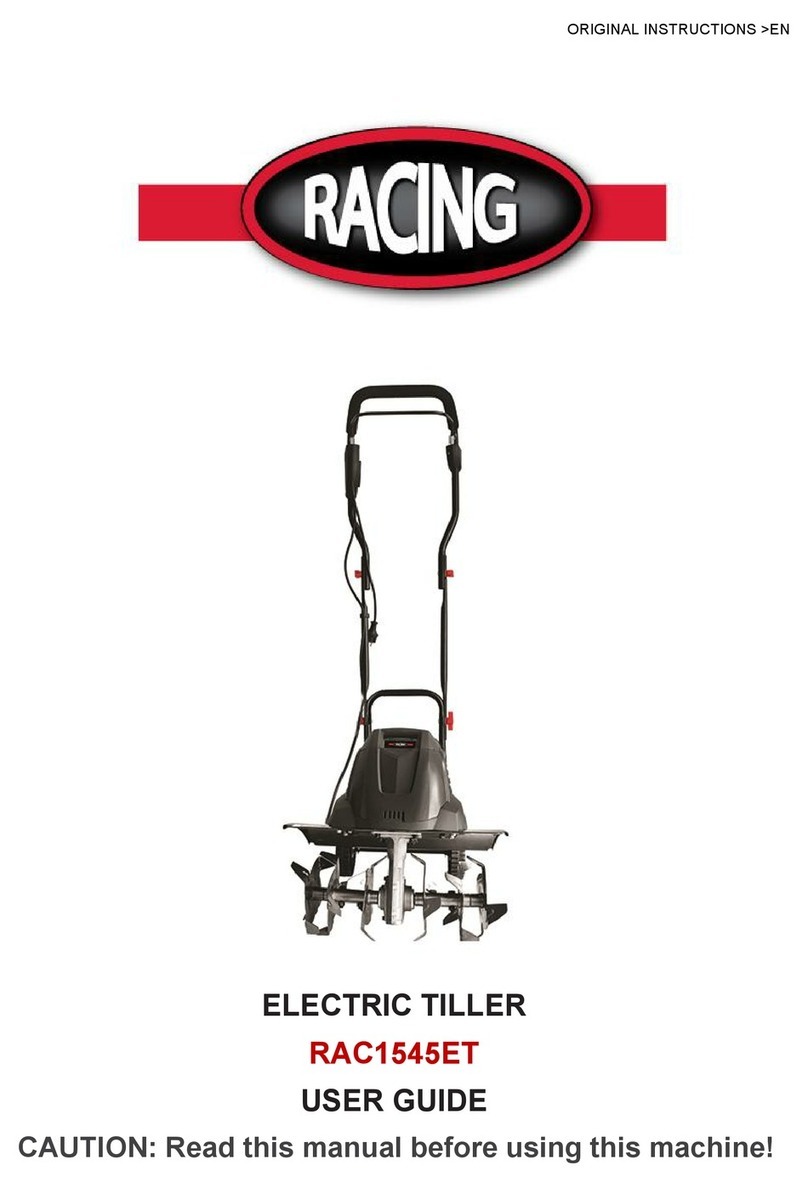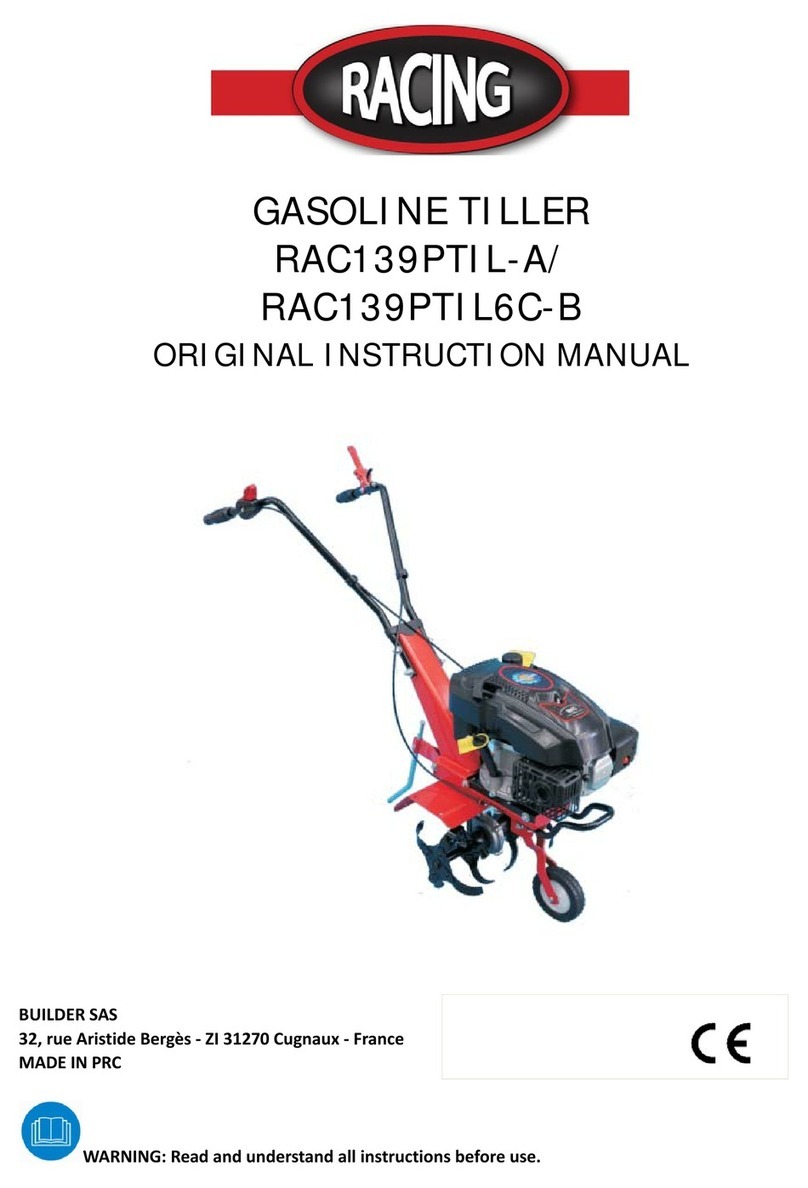
h) Use extreme caution when reversing or pulling the machine towards you;
i) Do not change the engine governor settings or over speed the engine;
j) Start the engine carefully according to manufacturer instructions and with feet well away
from the tool(s);
k) Do not put your hands or feet near or under rotating parts;
l) Never pick up or carry a machine while the engine is running;
m) Stop the engine:
Whenever you leave the machine;
Before refuelling;
n) Reduce the throttle setting during engine shut down.
4) Maintenance and storage
a) Keep all nuts, bolts and screws tight to ensure the equipment is in safe working condition;
b) Never store the equipment with petrol in the tank inside a building where fumes can reach
an open flame or spark;
c) Allow the engine to cool before storing in any enclosure;
d) To reduce the fire hazard, keep the engine, silencer, battery compartment and petrol
storage area free of vegetative material and excessive grease;
e) Replace worn or damaged parts for safety;
f) If the fuel tank has to be drained, this shall be done outdoors.
- This tool is not intended to be use by persons (including children) whose physical, sensory or
mental capabilities are reduced, or persons without experience or knowledge, unless they have
been able to benefit from through a person responsible for their safety, surveillance or prior
instructions regarding the use of the device.
- Children should be supervised to make sure they do not play with the device.
- Children and young persons as well as persons who have not read the instruction manual are
not allowed to operate this appliance.
- Local regulation may restrict the age of the operator.
- Never use the appliance when people, especially children, or pets are nearby.
- Remember that the operator or user is responsible for accidents or dangers to people or their
personal belongings.
- Do not use accessories other than those recommended by the manufacturer; these may
damage the unit and / or cause injury.
- Do not disassemble the device yourself. Any dismantling, repair or verification must be done
exclusively by a qualified person.
- Use the device fully assembled and secured. Check before use if the guards and safety devices
are in place.
- When operating the machine, always wear protective equipment including a face shield, visors
or goggles, hearing protection, helmet, gloves, non-slip shoes and protective clothing.
- Always transport the machine by its handle, never by another part of the machine.
- Avoid using the device in bad weather conditions, especially when there is a risk of
thunderstorms and lightning.
- In the event of an accident, stop using the machine immediately. Turn off and check the problem.
Do not use the machine while the machine is damaged.
- Use unleaded petrol for the engine. Petrol is flammable and explosive. During use, take special
precautions;
Do not smoke.
Avoid the presence of flames or sparks in the surrounding area.
Engines warm up during use. Make sure the engine is cool before refueling.
If there is leaking fuel, clean carefully and wait until it is dry before starting the engine.


































